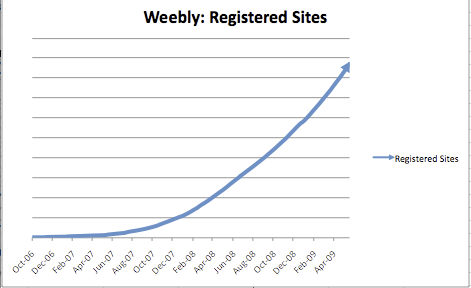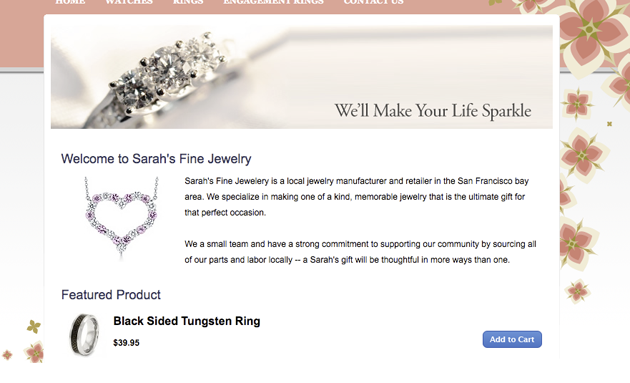Weebly, a popular WYSIWYG webpage maker, is launching a new feature today that will allow users to quickly make fully customized web stores using the Weebly interface they’re already familiar with.
Using the new feature is simple. Weebly has added a handful of new ‘revenue’ elements to its main menubar, which allows you to drag-and-drop items onto your page. Simply drag one of the four available ‘Product’ elements onto your page, and you’ll be presented with a small box where you can describe your product, add a photo, and set a price (you can easily create a new item in less than a minute). After creating a product once, you can add it to your other pages without having to recreate it.
The store supports both PayPal and Google Checkout accounts, and allows users to add items to a virtual shopping cart as they browse (you don’t have to buy one item at a time). And aside from any fees you might have from PayPal or Google, the Weebly storefront is totally free – the company isn’t taking a cut of any of your sales. To make money, Weebly plans to offer ‘pro’ features for power users at a premium in the future (the site also generates revenue through its pro accounts and domain sales).
There are already quite a few services online that allow you to generate your own virtual marketplace, but Weebly cofounder David Rusenko says that most of these do a poor job allowing you to customize the look and feel of your store, which often leads to something generic. Because Weebly can already be used to build your own fully customized webpage, adding the ability to sell items seemed like a natural extension to the product (especially since many users were already trying to sell items from their Weebly pages on their own).
At this point my only complaint about the Weebly store is that it doesn’t yet offer templates, though Rusenko says they’re on the way. This means that whenever you create a page for an item, you’re going to have to re-drag all of the links to your other items back to the bottom of the page. This may allow for a wide degree of flexibility, but I think it will also lead to inconsistency on some stores, as some designers forget to add links to their other products (or they get lazy). Rusenko ackowledges that this could get frustrating, but says that the Weebly storefront is really meant for people with small inventories, so this shouldnt be as much of a hassle as it would be for major retailers.
Beyond the new storefront functionality, Weebly is doing quite well. The site has almost 2 million registered sites (and is growing steadily, see graph below).


